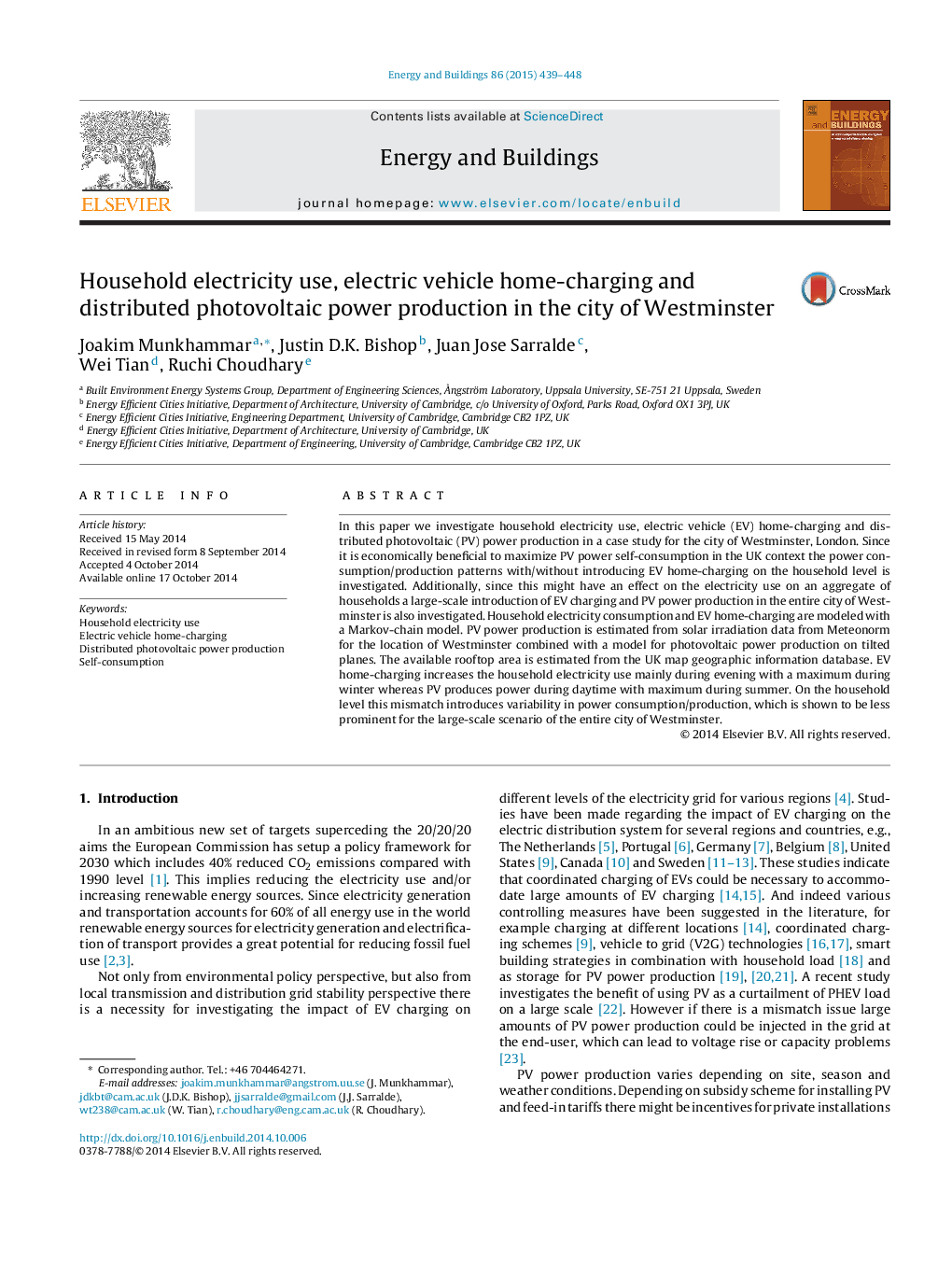| Article ID | Journal | Published Year | Pages | File Type |
|---|---|---|---|---|
| 6732844 | Energy and Buildings | 2015 | 10 Pages |
Abstract
In this paper we investigate household electricity use, electric vehicle (EV) home-charging and distributed photovoltaic (PV) power production in a case study for the city of Westminster, London. Since it is economically beneficial to maximize PV power self-consumption in the UK context the power consumption/production patterns with/without introducing EV home-charging on the household level is investigated. Additionally, since this might have an effect on the electricity use on an aggregate of households a large-scale introduction of EV charging and PV power production in the entire city of Westminster is also investigated. Household electricity consumption and EV home-charging are modeled with a Markov-chain model. PV power production is estimated from solar irradiation data from Meteonorm for the location of Westminster combined with a model for photovoltaic power production on tilted planes. The available rooftop area is estimated from the UK map geographic information database. EV home-charging increases the household electricity use mainly during evening with a maximum during winter whereas PV produces power during daytime with maximum during summer. On the household level this mismatch introduces variability in power consumption/production, which is shown to be less prominent for the large-scale scenario of the entire city of Westminster.
Related Topics
Physical Sciences and Engineering
Energy
Renewable Energy, Sustainability and the Environment
Authors
Joakim Munkhammar, Justin D.K. Bishop, Juan Jose Sarralde, Wei Tian, Ruchi Choudhary,
